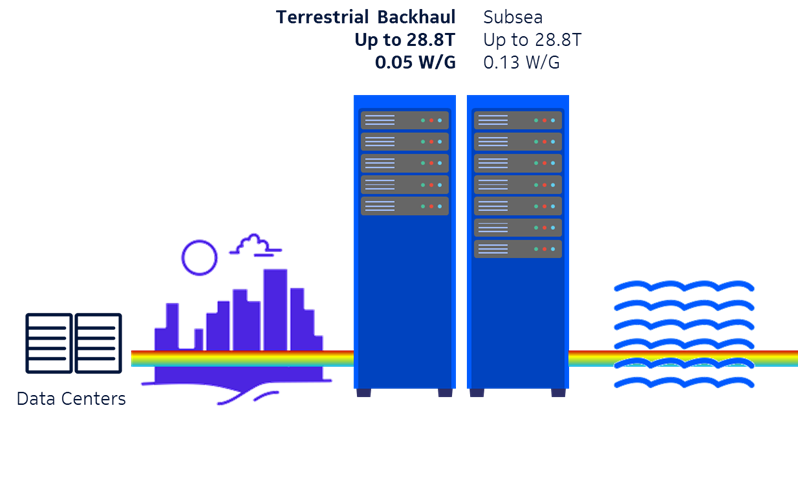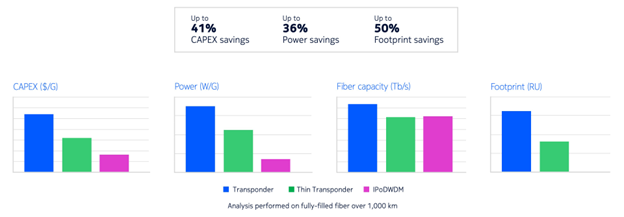Unlocking New Possibilities for Network
Designs with Thin Transponders
such as ICE-X 800G ZR/ZR+, in existing 400G routers. This leads to a maximized ROI and operational flexibility by avoiding the network-wide upgrade of all routers to the latest 800G-capable
generation.


Use cases of thin transponders
As noted, thin transponders combine key attributes of embedded transponders and coherent routing, providing cost-effective, flexible, and highly reliable optical transport leveraging the latest generation of coherent pluggables. Thin transponders are the solution of choice when space and power are limited, and a low variety of client services is required. Another advantage is the reduction in sparing costs, as the same 800G coherent pluggables can be used in IPoDWDM applications and in thin transponder modules. Figure 2 (on previous page) depicts a typical thin transponder application, such as connecting data centers.
One key application is backhauling data center traffic at Submarine Landing Terminal Equipment sites (SLTE). Embedded transponders are used to maximize fiber capacity from the wet plant. In
contrast, thin transponders are used to reduce power consumption and footprint for traffic in the dry plant, connecting in-land data centers as depicted in Figure 3.

Figure 3: DC Backhaul using Thin Transponders
click to enlarge
click to enlarge
Case study
To quantify the benefits of thin transponders, a network analysis was performed on a full-filled (C-Band) 1,000 km long optical link where all three deployment options were compared
side-by-side. Compared to embedded transponders, thin transponders offer compelling reduction in CAPEX ($/G), power consumption (W/G), and footprint (RU). However, they offer slightly
less (20%) capacity per fiber as depicted in Figure 4.

*Reflects different volumes and scale
Figure 4: Quantifying the benefits of thin transponders
click to enlarge
Figure 4: Quantifying the benefits of thin transponders
click to enlarge



















